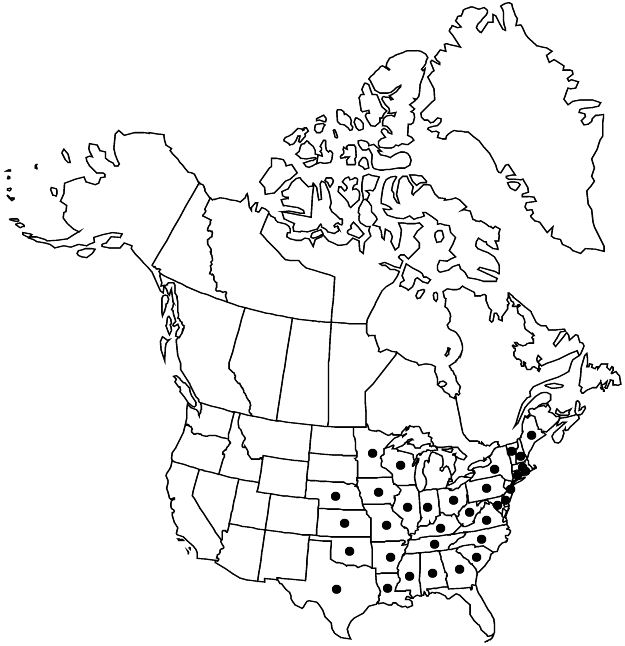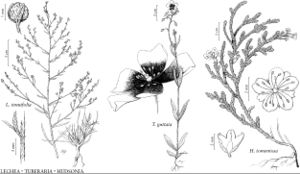Difference between revisions of "Lechea tenuifolia"
Fl. Bor.-Amer. 1: 77. 1803.
Common names: Narrowleaf pinweed
EndemicIllustrated
Synonyms: Lechea tenuifolia var. occidentalis Hodgdon
FNA>Volume Importer |
imported>Volume Importer |
||
| (5 intermediate revisions by 2 users not shown) | |||
| Line 13: | Line 13: | ||
}}{{Treatment/ID/Special_status | }}{{Treatment/ID/Special_status | ||
|code=F | |code=F | ||
| − | |label= | + | |label=Illustrated |
}} | }} | ||
|basionyms= | |basionyms= | ||
| Line 19: | Line 19: | ||
|name=Lechea tenuifolia var. occidentalis | |name=Lechea tenuifolia var. occidentalis | ||
|authority=Hodgdon | |authority=Hodgdon | ||
| + | |rank=variety | ||
}} | }} | ||
|hierarchy=Cistaceae;Lechea;Lechea tenuifolia | |hierarchy=Cistaceae;Lechea;Lechea tenuifolia | ||
| Line 42: | Line 43: | ||
-->{{#Taxon: | -->{{#Taxon: | ||
name=Lechea tenuifolia | name=Lechea tenuifolia | ||
| − | |||
|authority=Michaux | |authority=Michaux | ||
|rank=species | |rank=species | ||
| Line 56: | Line 56: | ||
|publication title=Fl. Bor.-Amer. | |publication title=Fl. Bor.-Amer. | ||
|publication year=1803 | |publication year=1803 | ||
| − | |special status=Endemic; | + | |special status=Endemic;Illustrated |
| − | |source xml=https:// | + | |source xml=https://bitbucket.org/aafc-mbb/fna-data-curation/src/2e0870ddd59836b60bcf96646a41e87ea5a5943a/coarse_grained_fna_xml/V6/V6_747.xml |
|genus=Lechea | |genus=Lechea | ||
|species=Lechea tenuifolia | |species=Lechea tenuifolia | ||
Latest revision as of 22:23, 5 November 2020
Herbs, biennial or perennial. Stems: basal produced; flowering erect, 12–40 cm, sparsely sericeous. Leaves of flowering stems opposite or whorled; blade linear to narrowly oblanceolate, 7–20 × 0.5–1.5 mm, apex rounded, abaxial surface sparsely pilose on midvein and margins, adaxial glabrous. Pedicels 1 per axil, 0.5–1.5 mm. Flowers: calyx 1.6–1.9 mm, outer sepals equaling or longer than inner. Capsules secund or not, broadly ovoid, 1.4–1.7 × 1.3–1.5 mm, shorter than or ± equaling calyx. Seeds 2–3(–5).
Phenology: Flowering summer–fall; fruiting fall.
Habitat: Dry, sandy or gravelly soil in openings or along margins of oak woodlands and oak-pine forests
Elevation: 100–300 m
Distribution

Ala., Ark., Conn., Del., Ga., Ill., Ind., Iowa, Kans., Ky., La., Maine, Md., Mass., Minn., Miss., Mo., Nebr., N.H., N.J., N.Y., N.C., Ohio, Okla., Pa., R.I., S.C., Tenn., Tex., Vt., Va., W.Va., Wis.
Discussion
Selected References
None.
Lower Taxa
None.
